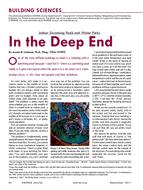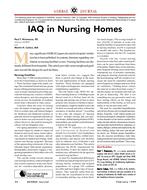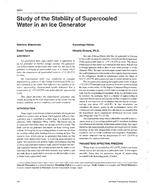The development of common sense energy-saving strategies for the operation and maintenance of building systems seems to be nearing completion. Further energy savings in buildings will have to come through strategies that are based upon better design and optimal control of building systems. The control system dynamics have a strong influence on the energy consumption patterns of a building’s environmental control system, and the study of control system dynamics can lead to the derivation of energy-saving strategies.
The purpose of the research reported in this paper was to study the effects of a building’s system control dynamics on energy consumption and on the occupant’s thermal acceptability in an occupied space with proportional integral control. A mathematical model was applied to derive relationships between the throttling range, proportional band, reset time, coil capacity, and part-load operation. The effects of these relationships on the enrgy consumption in a fan coil system for a classroom and on thermal acceptability by the occupants have been studied and reported in this paper. These studies have been used to derive some new control strategies for reducing energy consumption in building environmental control systems with proportional integral control.
Units: Dual
Citation: Symposium, ASHRAE Transactions, 1987, vol. 93, pt. 1, New York, NY
Product Details
- Published:
- 1987
- Number of Pages:
- 19
- File Size:
- 1 file , 1 MB
- Product Code(s):
- D-NY-87-22-1


